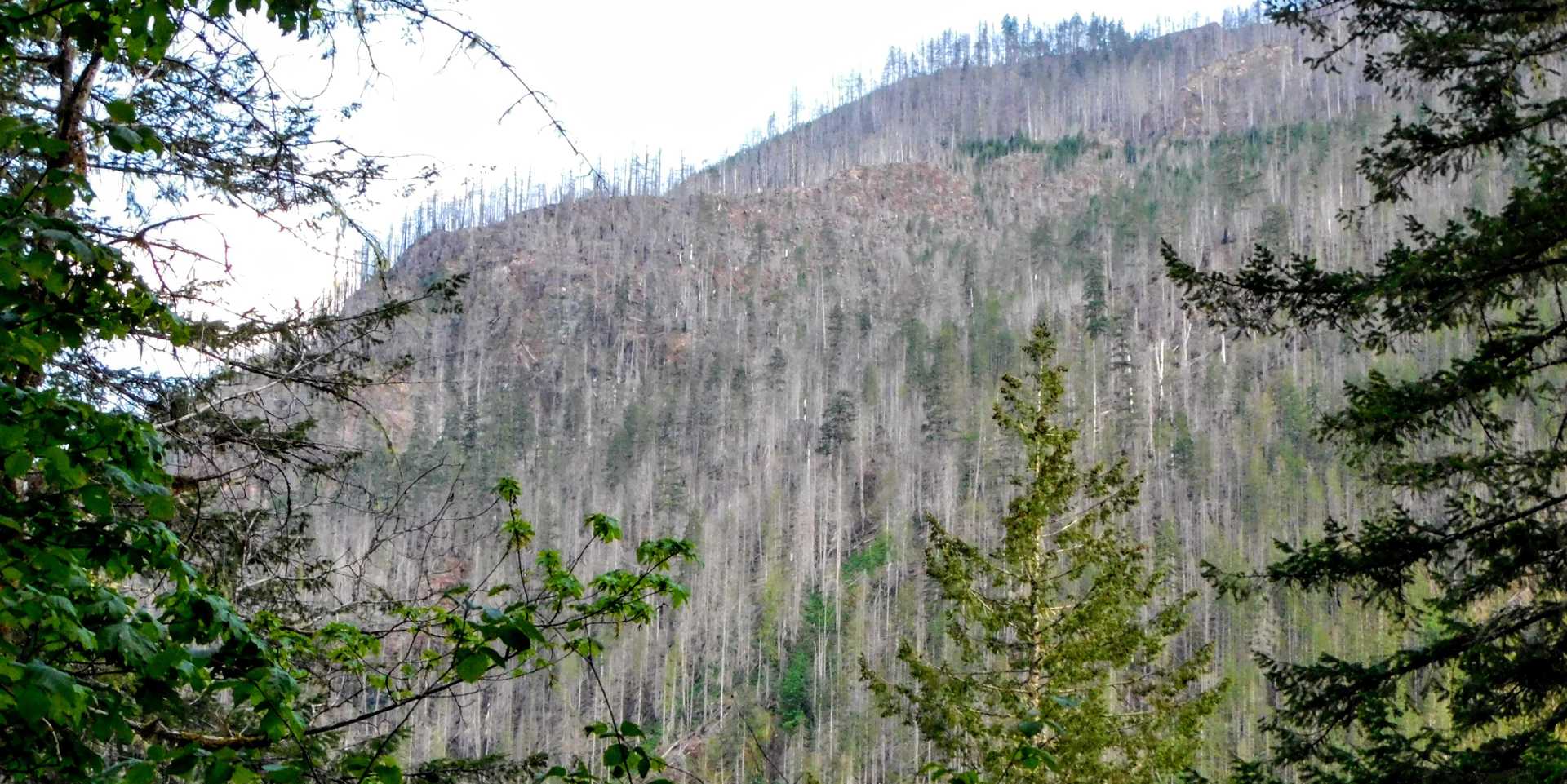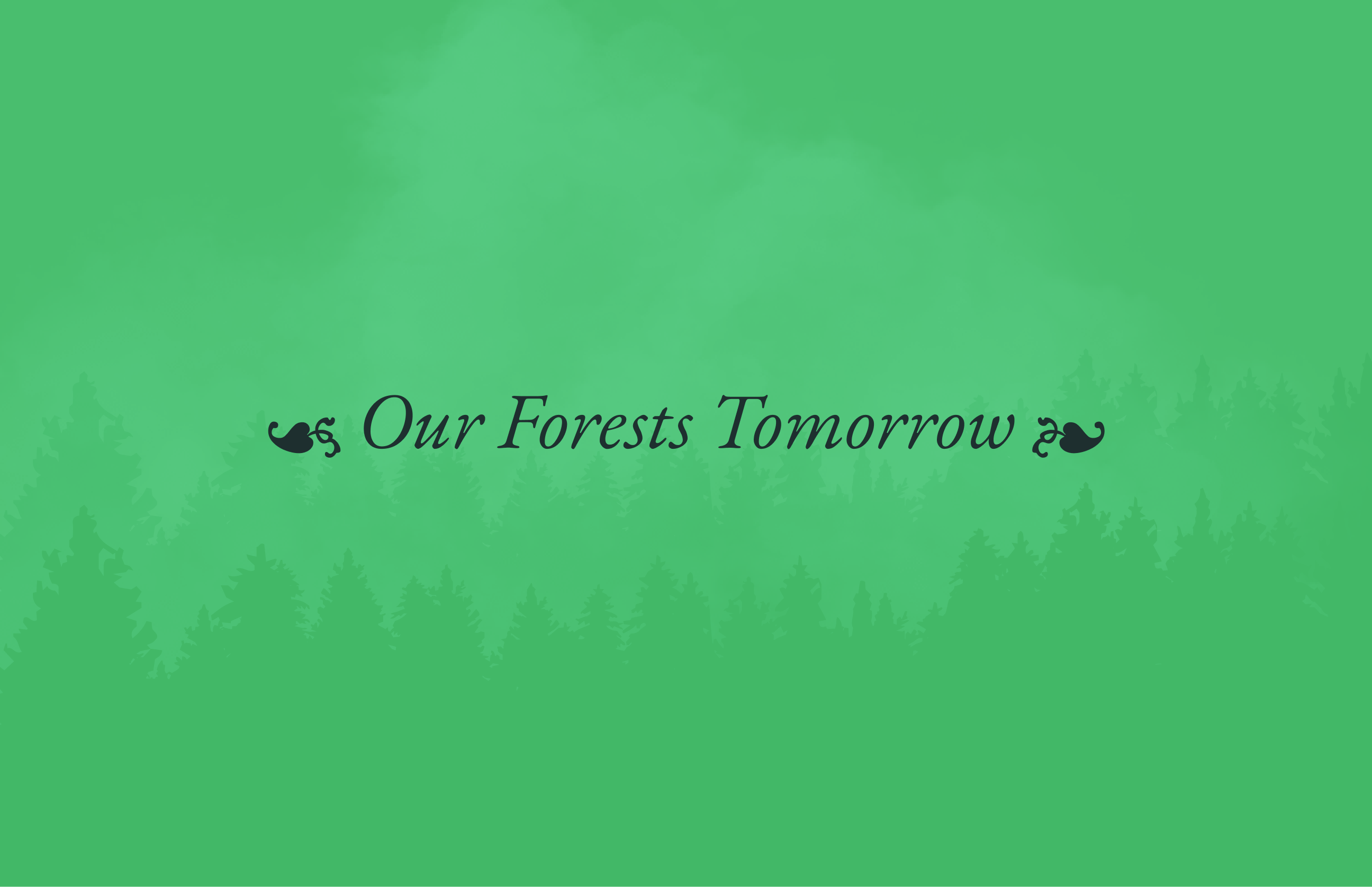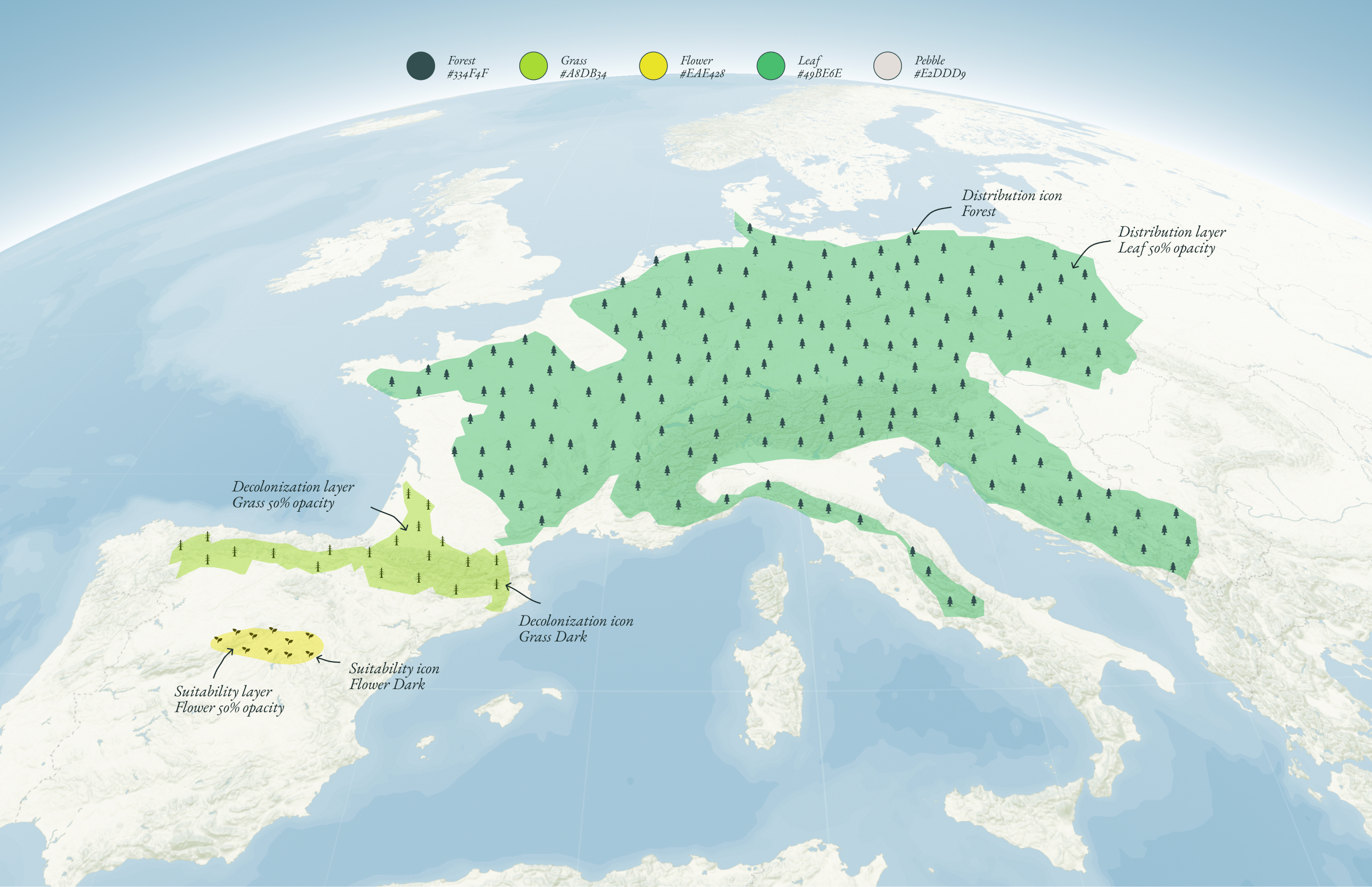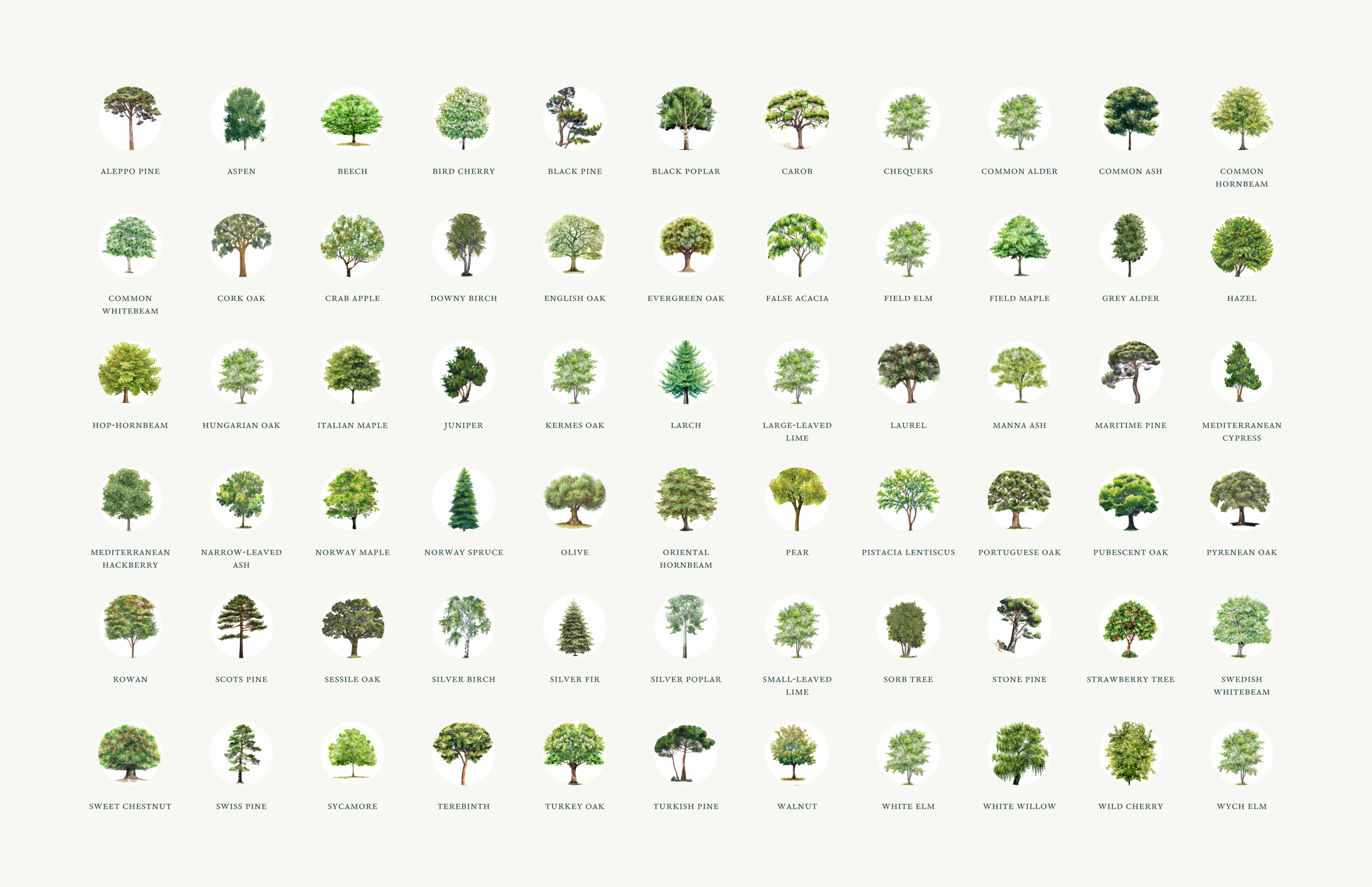Building on insights from the EU-Trees4F data, we're bringing the future of forests to life through interactive maps that invite exploration and discovery.
It's clear that our planet is warming. While we can escape to our air-conditioned homes, our trees are not so lucky. They're firmly rooted to the ground. Understanding where trees might migrate is important information for our collective climate response.
Scientists have been studying what trees are doing in response to a warming climate (Mauri et al., 2022; Zhu et al., 2012). While a tree is not going to pack its bags and head for cooler weather, its seeds might. Trees might not have control over where these seeds go, but their success when they land will depend on soil, climate, surrounding trees, and many other factors. This will ultimately define tree migration patterns.
In this age of rapid climate warming, we may not be able to rely on trees' natural migration techniques, understanding where a tree will be most successful can help in human-assisted migration, such as current efforts in a warming Pacific Northwest.
What's a tree to do when the planet warms and it can't move?
Early in 2022, a study was published in Nature (Mauri et al., 2022) sharing a dataset named EU-Trees4F. This comprehensive study examined 67 distinct tree species across Europe to understand their future due to climate change. However, there wasn't an easy way to visualize the data.
During the time that our team has available for experimentation - called Labs - a few engineers and designers developed a prototype project called Our Forests Tomorrow, a visualization and storytelling tool for complex datasets.
An open source visualization and storytelling tool for complex datasets.
Geospatial Data for Better Environmental Understanding
Understanding geospatial data without interacting with it on a map is challenging. Yet science is often published in the form of a paper with a few static maps and charts. If you want to explore the data to understand it better, you’re left empty-handed. Of course, this is not the fault of the scientists themselves. The tools simply don’t exist. Talk to any scientist, and they would love to have more eyes on their work.
Open-source tools like QGIS are great options for visualizing data, but you must download the data and configure it properly in QGIS. Then, you’re stuck with the visualization on your computer. Not very efficient if you want to share what you’ve done with others.
The EU-Trees 4F dataset inspired us to explore solutions to this challenge by building an open-source tool that demonstrated how a single dataset could tell many powerful data-driven stories.
We quickly developed a prototype that could perform two functions:
- An interactive map to better understand the data and find new insights
- An engaging story format to showcase the power of the data
You can explore the data here.
If you want to contribute or see how we built it, check out the Github repo.
Science is often published in the form of a paper with a few static maps and charts.
Mockup of the application showing landscape types in Europe
Through a quick, iterative building process, we explored some new patterns for visualization. We experimented with generative AI for imagery to augment the dataset. We also found Observable notebooks to be a powerful mode to gather insights from scientists, collaborate on stories, and prototype data visualization ideas. We created some example notebooks on the future of jamón ibérico and the positive impact of climate change for trees in some areas. These notebooks allow anybody to use their knowledge and expertise to explore the dataset, develop their own insights, and share with others.
Images of trees here were generated using AI
Our primary goal with this project is to amplify the impact of scientific data. We need tools like this to connect more people with open science. Open access to data is good, but open access with the proper tools is even better.
We hope we can encourage more people to contribute directly to open source tools like this. We'd love to know what you think about this project and share it with others. If you have a sticky technological challenge, we'd love to talk to you about it. It might just become our next Labs project.
About DevSeed Labs
We hire some of the smartest, most passionate people eager to solve the planet's toughest problems, usually collaborating with mission-driven partners.
While we're compensated for most tasks, we also pursue self-funded projects that align with our values, such as maintaining open-source tools, staying updated with technological advancements, and creating solutions for environmental and humanitarian needs.
Our Labs feature both experimental and established open-source tools. We advocate for transparent development and welcome collaborations. If you have earth data-related challenges, we are always looking for compelling problem statements and real, hard problems to solve!
Open access to data is good, but open access with the proper tools is even better.
What we're doing.
Latest




